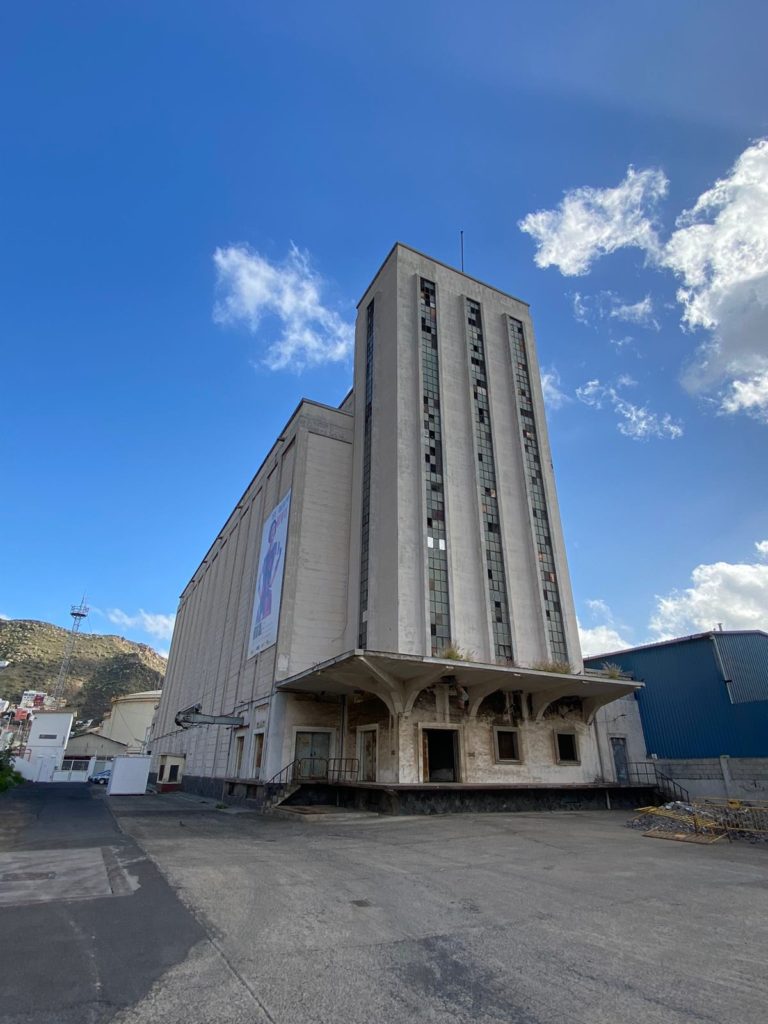Within the lists that are usually made, it is the abandoned building in Tenerife that, perhaps, goes more unnoticed. Possibly, its proximity to the old Santa Cruz de Tenerife Spa It has been one of the reasons why the old grain silo in the capital has been forgotten. But it is unique and, in its day, it had special value for several reasons.
To understand this building, you have to travel back to the time of the Franco dictatorship. The National Network of Silos and Granaries It emerges as a strategically located network of places to store cereals, especially wheat, in the face of scarcity. The wheat problem, as it was called, devastated Europe since World War I, for which reason measures were taken throughout the continent.
From that scarcity, in certain harvests, there was an oversupply, for which reason, already in the 40s of the last century, a network of storage places -vertical silos- were designed. Most were installed in Castilla-León, Aragon, Andalusia and Castilla la Mancha but in Tenerife, the one in Santa Cruz, located on the Autovía de San Andrés road, or TF-11, is unique because it is of the P type -there were up to 20 different types-, there is only another similar one in Malaga.
The P-type silos were those for transit located in the port area, only two being projected throughout the State. There was taken all the cereal, being stored.

The curious silhouette of this abandoned building in Tenerife
One of the things that attracts the most attention when contemplating these silos is their imposing silhouette, with a storage tower. This lifting tower meant that the cereal did not have to be manually raised to the upper area, which meant a great effort for the workers.
The blog The Historical Traveler explains, in a great article, the operating system of these vertical silos: ”The harvest was taken to the building where it was unloaded into some underground hoppers, distinguished by being covered by a roof. From there the grain was raised through the elevation tower (by mechanical means) to the top, where a belt distributed it along the vertical tanks (cells) existing in the silo, usually made of brick, cement or steel. There the grain was protected and its maturation was avoided. To collect it, it was extracted and packaged on the ground floor and loaded onto trucks (or onto ships in the port silos)”.
In this way, in the one at hand, the current abandoned building in Santa Cruz de Tenerife, on the ground floor, after the cereal had been packaged, it was taken to the ships that distributed it, on most occasions, to other islands.

Everything would change in the 1980s of the last 20th century. Spain entered the European Economic Community and public control over wheat disappeared. European standards were imposed, so this time of enclosures was abandoned. Some were converted into museums, others, as in the case of Castilla La Mancha are a tourist attraction thanks to urban art and in the case of this abandoned building in Tenerife, it was left aside, a witness of other times.
As can be seen in a Twitter thread from @oscarranjo, throughout the state geography there are abandoned silos. In many localities, for example, castles were used, as they were ideal places to install them.
The silos of the National Wheat Service. The rural skyscrapers in the 20th century. 671 erected between 1950 and 1986 in Spain. Created for an orderly management of cereal harvests. Olmedo #Valladolid. Do you share or cite a nearby silo? #IndustrialHeritage #SilosDeCereal pic.twitter.com/F4IkDv7Dja
— oscarranlo 🌾 (@oscarranlo) January 12, 2023
















